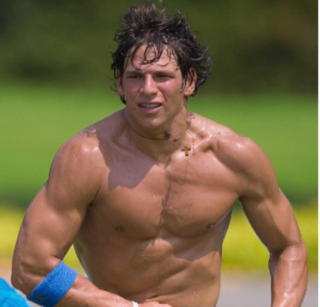“They went out of their way to say they didn’t matter,” David says.
“他們不遺余力地說他們不重要,”大衛(wèi)說。
But the med student turned patient would prove he was on to something.
但這個成為病人的醫(yī)學(xué)院學(xué)生證明了他的觀點。
“Patients pick up on things no one else sees,” he says.
他說:“病人能學(xué)會別人看不到的東西。”
Castleman disease struck David four more times over the next three years, with hospitalizations that ranged from weeks to months.
在接下來的三年里,大衛(wèi)又四次罹患卡斯托曼病,住院時間從幾周到幾個月不等。
He stayed alive only through intense chemotherapy “carpet bombing” campaigns.
他只是通過強烈的地毯式化療才活了下來。
During one relapse at a Duke University hospital, his family called in a priest to give him his last rites.
有一次在杜克大學(xué)醫(yī)院復(fù)發(fā),他的家人請了一位牧師為他舉行臨終儀式。
After all the setbacks, all the organ failure, all the chemo, David worried that his body would simply break.
在經(jīng)歷了所有的挫折,所有的器官衰竭,所有的化療后,大衛(wèi)擔(dān)心他的身體會崩潰。
Yet despite it all, he managed to graduate from medical school.
盡管如此,他還是設(shè)法從醫(yī)學(xué)院畢業(yè)了。
He also founded the Castleman Disease Collaborative Network ( CDCN ), a global initiative devoted to fighting Castleman disease.
他還創(chuàng)立了卡斯托曼病協(xié)作網(wǎng)絡(luò),這是一個致力于對抗卡斯托曼病的全球倡議。
Through the CDCN , he began bringing the world’s top Castleman disease researchers together for meetings in the same room.
通過卡斯托曼病協(xié)作網(wǎng)絡(luò),他開始召集世界頂尖的卡斯特曼疾病研究人員在同一間屋子里開會。
His group worked with doctors and researchers as well as patients to prioritize the studies that needed to be done soonest.
他的團隊與醫(yī)生、研究人員以及患者一起工作,以確定需要盡快完成的研究。
Rather than hoping for the right researchers to apply for grants, they recruited the best researchers to investigate Castleman.
他們并沒有期望合適的研究人員申請資助,而是招募了最好的研究人員來研究卡斯特曼疾病。
David also prioritized clinical trials that repurposed drugs the FDA had already approved as safe rather than starting from scratch with new compounds.
大衛(wèi)還優(yōu)先考慮重新利用FDA已經(jīng)批準(zhǔn)為安全的藥物的臨床試驗,而不是從零開始使用新的化合物。
Meanwhile, he never knew whether the next recurrence would finally kill him.
與此同時,他也不知道下次復(fù)發(fā)是否會最終殺死他。
Staving off relapses meant flying to North Carolina every three weeks to receive chemotherapy treatments.
為了避免復(fù)發(fā),他需要每三周飛往北卡羅來納州接受化療。
Even so, he proposed to his college sweetheart, handing her a letter written by his niece that said, in part,
盡管如此,他還是向大學(xué)女友求婚了,并遞給她一封由他侄女寫的信,信中寫道,
“I’m a really good flower girl.” “The disease wasn’t a hindrance to me,” says his now-wife, Caitlin Fajgen-baum.
“我真是個好持花少女。他現(xiàn)在的妻子凱特琳·法根-鮑姆說:“這種病并沒有妨礙我。”

“I just wanted to be together.” But in late 2013, Castleman struck again, landing David in that Arkansas hospital.
“我只想在一起。但在2013年底,卡斯特曼病再次發(fā)作,戴維去了阿肯色州的那家醫(yī)院。
It marked his closest brush with death yet.
這是他與死亡最接近的一次接觸。
Before he and Caitlin could send out their save-the-date postcards, David set out to try to save his own life.
在他和凱特琳寄出他們的《戀愛預(yù)留日》信片之前,大衛(wèi)開始嘗試拯救自己的生命。
After examining his medical charts, he zeroed in on an idea that—more than 60 years after Castleman disease was discovered-researchers hadn't yet explored.
在檢查了他的醫(yī)療記錄后,他把注意力集中在了一個想法上——在發(fā)現(xiàn)卡斯特曼病60多年后——研究人員還沒有探索過的想法。


